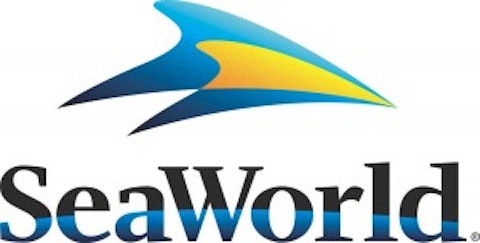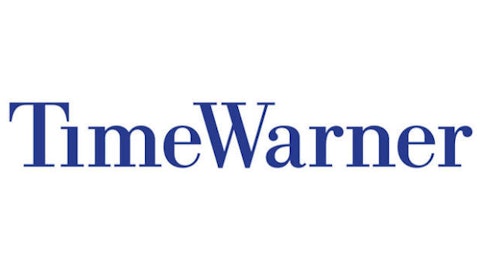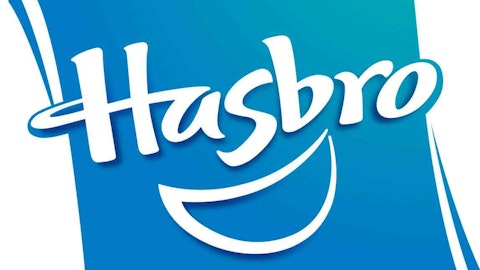When you evaluate a publicly-traded business, it’s important to research the risks associated with it. Theme park SeaWorld Entertainment Inc (NYSE:SEAS) released the final version of its prospectus form 424B4 on the day before its initial public offering (IPO). In the risk section, you can find five risks that hint at the possibility that the 24% run up in stock price on Seaworld’s first day of trading may not last.

“Incidents or adverse publicity concerning our theme parks or the theme park industry generally could harm our brands or reputation as well as negatively impact our revenues and profitability.” – Prospectus, page 19
Anytime a business gets involved with large and exotic animals, the risk of injury or death of employees, customers, or suppliers always exists. When this happens, it spurs negative media coverage and causes customers to harbor second thoughts about attending parks such as Seaworld.
In 2010, an Orca whale killed a trainer in full view of visitors, according to a New York Times article. In the summer of 2013, you will see the release of a documentary called “Blackfish,” which details the death of a trainer.
Market players
“Because we operate in a highly competitive industry, our revenue, profits or market share could be harmed if we are unable to compete effectively.” -Prospectus, page 21
No doubt SeaWorld Entertainment Inc (NYSE:SEAS) operates in a market with many players, competing with other “pure” theme-park companies such as Cedar Fair, L.P. (NYSE:FUN) and Six Flags Entertainment Corp (NYSE:SIX), as well as subsidiaries of entertainment conglomerates such as The Walt Disney Company (NYSE:DIS) and Comcast Corporation (NASDAQ:CMCSA).
Likewise, your biggest concern should lie in Seaworld’s miniscule cash balance of $45 million (table below). The $64 billion question: how can Seaworld effectively compete against entertainment conglomerates such as Disney, which possesses 133 times the amount of cash on its balance sheet, or Comcast Corporation (NASDAQ:CMCSA), which possesses 129 times the cash?
Building roller-coaster rides and building theme parks in general represents a capital-intensive exercise. With The Walt Disney Company (NYSE:DIS)’s deep pockets, it can develop new characters, acquire new iconic entertainment companies to add to its already strong portfolio and incorporate them into new theme park rides renewing consumer interest.
For example, Pixar plans to release the movie Planes, which will add to a vast universe that Disney can leverage into new roller-coaster rides, television shows and merchandise. The Walt Disney Company (NYSE:DIS) also plans to put Lucasfilm’s assets to work by producing a new Star Wars movie for release in 2015 on which it can base new theme-park rides, television shows, etc. Disney does not know the limits of exotic animals. Its diversity will contribute to superior shareholder returns for quite some time.
Comcast Corporation (NASDAQ:CMCSA) can also do the same by building new rides centering on present and future Universal movies and television shows like the new Transformers: The Ride-3D set to open in summer 2013. Comcast can also leverage it’s television shows such as Revolution and BattlestarGalactica into new theme parks, lines of merchandise, etc.
Currently, Disney and Comcast trade at just 20 times earnings versus SeaWorld Entertainment Inc (NYSE:SEAS)’s 36 times earnings. The cheaper valuations of both companies mean better potential for their shareholders.
| Company | Cash (in thousands) |
|---|---|
| SeaWorld | $45,675.00 |
| Cedar Fair | $78,830.00 |
| Disney | $6, 110,000.00 |
| Six Flags | $629,208.00 |
| Comcast’s NBC Universal | $5,921,000.00 |
*Compiled from SEC filings
Income and expenses
“Our substantial leverage could adversely affect our ability to raise additional capital to fund our operations, limit our ability to react to changes in the economy or our industry, expose us to interest rate risk to the extent of our variable rate debt and prevent us from meeting our obligations under our indebtedness.” -Prospectus, page 24
As you can see in the table below, Seaworld’s remaining $1.6 billion in debt after a $177 million pay down (using most of its IPO proceeds) calculates to a jaw dropping 356%. Seaworld’s times interest earned, defined as the ratio of operating income to interest expense, comes to 2. Seaworld stands on thin ice in terms of margin of safety.
Disney lies on the opposite end of the spectrum with its operating income exceeding interest expense by about 24 times. SeaWorld Entertainment Inc (NYSE:SEAS)’s exposure to variable interest debt leaves it vulnerable to any increase in interest rates from historical lows.
Macroeconomic conditions or an unexpected drop in cash flow from things such as negative media bias surrounding the death of a SeaWorld Entertainment Inc (NYSE:SEAS) trainer could impact this company’s ability to pay its interest payments.
| Company | Long-term debt to equity | Times interest earned |
|---|---|---|
| SeaWorld | 356%* | 2 |
| Cedar Fair | 962% | 2 |
| Disney | 25% | 24 |
| Six Flags | 156% | 4 |
| Comcast’s NBC Universal | 35% | 6 |
*Compiled from SEC filings
*Estimated after use of IPO Proceeds
Post IPO
“Affiliates of The Blackstone Group L.P. (NYSE:BX) control us and their interests may conflict with ours or yours in the future.” –Prospectus, page 27
Private equity firm Blackstone originally bought Seaworld from Anheuser-Busch InBev NV (ADR) (NYSE:BUD) for roughly $1 billion. After the IPO, it still retains more than 60% of the company. SeaWorld paid $600 million in dividends to The Blackstone Group L.P. (NYSE:BX) over the past couple of years, representing one of the reasons for the current minuscule cash balance.
The relationship between Blackstone and Seaworld remains so intertwined that it’s listed as a conflict of interest on the prospectus. For example, more than $47 million dollars of IPO proceeds will go toward a “one-time payment to an affiliate of Blackstone in connection with the termination of the 2009 advisory agreement.”
In addition, Blackstone affiliates own part of Seaworld’s debt. In other words, all of the IPO proceeds will benefit Blackstone and its affiliates/partners instead of Seaworld itself other than the reduction of Seaworld’s debt.
What will keep The Blackstone Group L.P. (NYSE:BX) from taking actions beneficial to only itself over the outside shareholders in Seaworld? Already, Seaworld promises $0.20 per share per quarter in dividends. Could this be motivated by Blackstone? It’s in your best interest to watch the relationship between Seaworld and Blackstone.
“We may be unsuccessful in implementing required internal controls over financial reporting.” – Prospectus, page 33
One shocking risk listed in SeaWorld’s prospectus lies in that fact that it uncovered “significant deficiencies” in its internal controls during 2011 and 2012. Of course it was a privately held subsidiary of Blackstone then, and surely the company is taking steps to correct it now that the SEC will be watching; however, it raises the question of whether the company can maintain proper controls as a publicly-traded company in the future.
The takeaway is this: stay away from SeaWorld Entertainment Inc (NYSE:SEAS) as an investment as there are better fish in the sea of investing (pun intended). Low cash balances, high debt with variable interest rates, conflicts of interest with its holding company Blackstone, and the disturbing rash of deficiencies in its internal controls all spell trouble. The 24% run on its first day of trading may disappear in an instant.
The article 5 Risks That Investors in This Theme Park Should Worry About originally appeared on Fool.com is written by William Bias.
Copyright © 1995 – 2013 The Motley Fool, LLC. All rights reserved. The Motley Fool has a disclosure policy.

